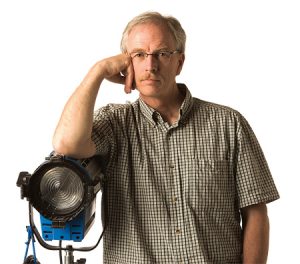With 28 years of experience in teaching, fine-art production, and commercial photography, visual arts professor Val W. Brinkerhoff (BA ’80) knows how to make great photographs. Here are his tips to make yours better.
Q: What are some common mistakes in amateur photography?
A: There needs to be more making rather than taking photographs. Many people point and click and hope something magical happens. Know what you want the photograph to express, and then work to make it happen with key tools such as composition, lighting, gesture, and expression.
Q: How does a beginner enhance composition?
A: Get closer to the subject, and balance the subject in the frame with important objects. Consider using odd numbers of objects rather than even numbers. Look for visual relationships between people, objects, and colors within the frame, and observe how successful photographers arrange their visual elements.
Q: What are some ways to use lighting?
A: Lighting can dramatically affect form and mood. Find soft but directional natural lighting to put your subject in. The bigger the light source, the better. Large windows with indirect light are very good for indoor shots. Turn the subject toward and away from the light and watch how the light falls on the face. Use frontal lighting to diminish texture and side lighting to emphasize it. When outdoors, put subjects in the shade near a warm-colored, natural reflector (sunlit wall, car, etc.).
Q: How about gesture and expression?
A: Have the subject talk about themselves so that they forget they’re being photographed and lose themselves in the moment. Turn the camera vertical, get closer, and eliminate unnecessary space (especially above the head) so that attention is directed to the eyes—the real focus of most portraits.







